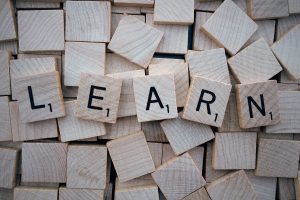We bombard employees with a lot of information -- overload says Forbes -- and that can lead to lower productivity for your team. The hundreds of emails all flagged urgent, the bosses knocking on the door, the sticky notes on computer screens that welcome people back from lunch...we throw a lot at people. As we continue our series on increasing productivity (you know already how to avoid being a toxic boss from Part 1 of this series), let’s examine an innovative way to effectively ensure employees properly absorb all that information and put it to good use: by examining employee learning styles.
“No longer can employees, managers, and others in the business community ignore the fact that the workplace is changing. Professionals come to the workplace with a variety of personalities, skill sets, aptitudes, abilities, and learning styles.” - From Learning Styles Among International and American Business Students, McPherson and Willis, 2010.
Educators have long acknowledged that no one style of teaching reaches every student because each individual possesses a style that works more effectively for them than others. For some students, seeing information allows for more retention than just hearing it in a lecture. For others, hands-on experience -- “doing” -- is more effective. It’s really no different in business, and helping your team discover their learning styles while also adapting your methods of communication to reach them can be an incredibly powerful way to increase productivity in your company.
Here are the different ways people learn and process information:
Visually
Individuals with a visual learning style process information first by what they see. They typically need to watch a demonstration of a task before trying it themselves.
Visual learners will respond positively to:
- written instructions
- graphs and charts
- color coded notes
- instructional videos
- photographs or illustrations
Auditorily
Employees with an auditory learning style prefer to listen first and have information explained to them in a step-by-step process. For the information to stick, they require dialogue and verbal instructions in addition to any visual examples.
Auditory learners respond positively to:
- one-on-one conferences and dialogues
- verbal analogies and oral paraphrasing
- lectures
- audio recordings
- debates
- tape recorders or smartphones to recite notes
Kinesthetically
Kinesthetic learners, or tactile learners, are your “doers”. For the information to stick, they have to physically try the task out themselves.
Kinesthetic learners process information best when they can:
- skim through instructions before reading in detail
- translate information into diagrams or charts while reading instructions in detail
- take active notes during meetings, interviews, or training
- memorize information while engaging in physical activity
- annotate text while reading
- use flashcards
When you recognize the differences between people and adjust your teaching methods, increased productivity isn’t too far behind. Being aware of team’s learning styles will give your company a tremendous advantage. Just keep in mind the types of learners in your company, and aim to increase reach their different learning styles by incorporating different methods into your meetings, presentations, training sessions, and overall work relationships.
Next week, we’ll dive even further into this topic and how you can integrate all the different modes of communication so that you reach the most people. Doing so will provide you more opportunities to involve your team, as they understand the material more easily and can, in turn, relay the information to others. Stay tuned.
